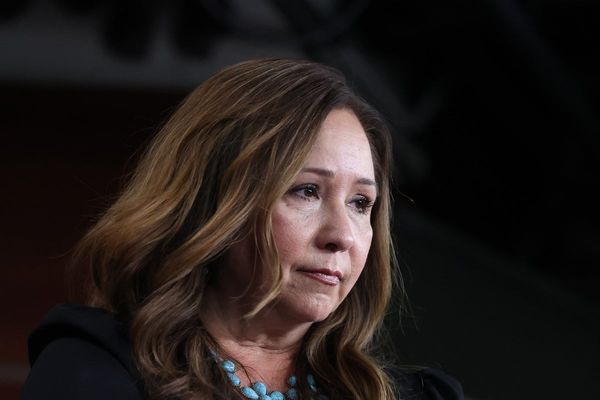
This month's oral arguments about affirmative action before the Supreme Court featured a slickly executed call-and-response between the attorney for Students for Fair Admissions (SFFA) and several of the justices in the conservative majority.
In his opening statement, SFFA's Cameron T. Norris, who once clerked for Justice Clarence Thomas, compared "what Harvard is doing to Asians" to "what it was doing to Jews in the 1920s."
Norris glided over what Harvard was doing, exactly, but his charge echoed the arguments made by the Louis D. Brandeis Center for Human Rights and the Silicon Valley Chinese Association Foundation (LDB-SVCAF) in the amicus brief they filed in support of SSFA.
It took Justice Neil Gorsuch only a short time to pick up the cue. "What do we do about history here," he asked, sounding scandalized. What do we do about the fact that "Harvard's move to a holistic application approach happened in the 1920s because it wanted to impose a quota on Jewish applicants"? How do we reckon with how Harvard once used "diversity as a subterfuge for racial quotas?"
Justice Samuel Alito piled on. In his questioning of Harvard's attorney, Seth P. Waxman, Alito asked pointedly: "[D]id Harvard sell Justice Powell a bill of goods?"
Nearly half a century ago in the landmark Bakke decision of 1978, Justice Lewis F. Powell Jr. had nodded approvingly at Harvard's admissions system, holding it up as a model. The system weighed each individual applicant holistically, considering not just their grades and test scores but also their non-academic qualities, such as their leadership ability and moral character. Justice Powell's opinion provided the constitutional footing for affirmative action that it would uneasily rest upon for the next four decades.
Now, 40-odd years later, Alito was pugnaciously demanding to know whether Harvard had deceived his predecessor about the true nature of what it had been doing.
How did Asian Americans as a group wind up at the center of the controversy over affirmative action in college admissions, when no Asian American individual has evidently come forward to lend their name to a lawsuit?
What was going on? How did Asian Americans as a group wind up at the center of the controversy over affirmative action in college admissions, when no Asian American individual has evidently come forward to lend their name to a lawsuit? Why were Gorsuch and Alito comparing Harvard's treatment of Asian Americans today to its treatment of Jews a century ago? Could it really be true that Harvard was discriminating against Asian Americans "in the same manner in which it discriminated against Jews in the 1920s and 1930s," to use the words of the LDB-SVCAF brief ?
The answer to the last of these questions is undoubtedly no, and it is a plain error to think otherwise. There are some important threads of continuity, but flat-out equating the treatment of Jewish applicants at Harvard a century ago with the treatment of Asian Americans at Harvard today is drawing a false equivalence.
This is not to deny the antisemitic roots of "holistic review." In "The Chosen: The Hidden History of Admission and Exclusion at Harvard, Yale, and Princeton," sociologist Jerome Karabel exhaustively documents how Harvard moved away from a system of exam-based admissions over the course of the 1920s and toward a system of selective admissions, and provides convincing evidence that Jewish restriction was the central impetus behind Harvard's decision to assess applicants not just on their academic accomplishments but on their non-academic qualities as well.
But there is a world of difference between Harvard's exclusion of Jews years ago and the way it treats Asian Americans today. As noted by Karabel himself, then-Harvard president A. Lawrence Lowell, along with many faculty, alumni and students at the time, clearly wanted to restrict Jewish admissions. They were prejudiced against Jews, whom they viewed as clannish grinds — and unmanly, morally deficient, grasping and unattractive to boot. Their intentional goal was to limit Jews to no more than 15 percent of the student body, and they did so by identifying Jewish applicants and excluding them through a range of open and veiled devices. These practices included personal interviews, classifying applicants according to the likelihood they were Jewish, reviewing photographs and weighing inherently subjective non-academic factors like "character" and "fitness" in a manner that disadvantaged Jewish applicants. It was unquestionably one of the most shameful chapters of Harvard's history, as Harvard's own attorney basically conceded in oral argument earlier this month.
In almost every fundamental way, however, Harvard's current treatment of Asian American applicants is not comparable. Harvard is not obsessed with identifying Asian American applicants, nor is it motivated by racial animus against them. It has not surreptitiously used the "personal ratings" of Asian American applicants to discriminate against them.
Persuasive evidence for these claims comes from the findings of fact by federal district judge Allison D. Burroughs, who presided over SSFA's case against Harvard and ruled in Harvard's favor three years ago. Burroughs found "no evidence of any racial animus whatsoever" or "any sort of systemic reliance on racial stereotypes" to disadvantage Asian American applicants. Judge Burroughs further found that "testimony of the admissions officers that there was no discrimination against Asian American applicants with respect to the admissions process as a whole and the personal ratings in particular was consistent, unambiguous, and convincing."
Specifically on the question of how Asian American applicants were scored in the "personal ratings" review — a source of contention and critique — Judge Burroughs found that a factor external to the Harvard admissions office was at play: "At least a partial cause of the disparity in personal ratings between Asian American and white applicants appears to be teacher and guidance counselor recommendations, with white applicants tending to score slightly stronger than Asian Americans on the school support ratings."
A more thorough repudiation of the Jewish-Asian equivalence is difficult to imagine.
But the equivalence is grossly inapposite for another reason, which is perhaps even more fundamental. It requires us to ignore nearly a century of historical change.
Harvard nowadays is much different than it was a century ago. At the time Lowell was orchestrating the exclusion of Jews, it was a finishing school for the white Anglo-Saxon Protestant elite that was the closest thing that the United States has ever had to a national ruling class. Today, Harvard is an internationally renowned research university that attracts the most talented faculty, researchers and students from every corner of the globe. Harvard would not be Harvard without its diversity. What institutional purpose would it serve to discriminate invidiously against any group?
More important, perhaps, is the transformation of the values at the core of higher education and American society more broadly. Diversity was simply not highly valued during the first third of the 20th century, when many still thought of the U.S. as a fundamentally white Protestant nation. But diversity grew increasingly important over the course of the postwar period. By the late-1950s and early 1960s, key numbers of selective colleges and universities were beginning to expressly seek out diversity of all kinds on the rationale that it was educationally beneficial. Harvard was foremost among them. The intensifying mobilization of the civil rights movement, especially the dramatic protests of 1963, led racial diversity to take on a special salience. By 1978, when Justice Powell wrote his opinion in Bakke, diversity had become a core value in higher education, and Harvard had been self-consciously trying to diversify itself for more than 15 years. Today, nearly everyone in American society values diversity.
If a short recitation of the facts makes clear there is no equivalence between Harvard's treatment of Asian Americans now and Jewish applicants in the 1920s, then why do so many conservatives keep bringing it up?
It may be tempting to entertain the belief that Harvard is using "diversity" to limit Asian American admissions in the same manner as it was using "character" and "fitness" to limit Jewish admissions. The idea glimmers with conspiratorial appeal. But it requires accepting the facially ludicrous belief that Harvard has been successfully and continuously deceiving the world for nearly half a century in the face of intense scrutiny. Moreover, it requires pretending that diversity has not become a widely held value in American culture. Even SFAA attorney Cameron T. Norris acknowledged in Monday's oral argument that "racial diversity is not a bad thing. It is a great thing."
But if it is so clear after a short recitation of the facts that "what Harvard is doing to Asians" is so obviously different from "what it was doing to Jews in the 1920s," then why were Norris, the Louis D. Brandeis Center for Human Rights, the Silicon Valley Chinese Association Foundation, Justice Gorsuch and Justice Alito bringing the point up? Why were they getting the history so grievously wrong? Were they even arguing in good faith?
A close look at the last time the Supreme Court seriously grappled with affirmative action suggests that perhaps those pushing the Jewish-Asian equivalence were not really interested in getting the history right. Indeed, what the record in the two Fisher v. University of Texas cases — known as Fisher I (2013) and Fisher II (2016) — reveals is that the emergence of Asian Americans in the legal picture did not arise out of a bottom-up process so much as a top-down one.
The plaintiff in these cases was Abigail Fisher, a white applicant residing in Sugar Land, Texas, an affluent suburb of Houston. Fisher had been denied admission to the University of Texas, and sued the university claiming a violation of the Equal Protection Clause and the Civil Rights Act.
Fisher's original complaint made no mention of Asian Americans, and the district court opinion barely referenced them. When the case reached the Fifth Court of Appeals, Fisher's appellate brief charged fleetingly that Asian Americans were hurt by the University's use of race, and the issue was the subject of a short exchange between dueling Asian American legal groups that had filed amicus briefs (here and here, for instance). But it was far from a central bone of contention for the three-judge panel that affirmed the district court decision.
In point of fact, as law professor Cara McClellan noted on Dahlia Lithwick's podcast, discrimination against Asian Americans in the admissions process only became the object of serious, high-profile judicial consideration after Justice Thomas and Justice Alito brought the issue up in their concurrences and dissents in the Fisher cases.
Fisher's attorneys, which included one of Justice Thomas's former clerks, William Consovoy, did their part to revive the charge, asserting that the University "employs race in admissions decisions to the detriment of Asian Americans." Yet the issue remained peripheral. It was a total non-starter for the majority in Fisher I. Justice Anthony Kennedy, who wrote for the majority, did not mention Asian Americans a single time in his opinion. But the absence did not stop Thomas from declaring prominently in his concurrence that "[t]here can be no doubt that the University's discrimination injures white and Asian applicants who are denied admission because of their race."
A similar dynamic played out even more intensely in Fisher II. Kennedy again wrote the majority opinion, and the main passage mentioning discrimination against Asian Americans quoted an amicus brief by the Asian American Legal Defense and Education Fund, which noted that claims of discrimination against Asian Americans were "entirely unsupported by evidence in the record or empirical data."
This did not deter Alito from repeatedly returning to his view of how shabbily Asian Americans had been treated by the university. In a dissent that smoldered with umbrage on their behalf, he emphatically asserted that the "UT plan discriminates against Asian-American students." In fact, he took pains to explain in an imperious footnote that the majority was wrong to claim that the university did not discriminate against Asian-American students because such a claim denies the zero-sum nature of the admissions process and "defies the laws of mathematics."
Alito was joined in his dissent by Thomas and, somewhat surprisingly, also by Chief Justice John Roberts.
Not long after Alito's angry dissent in Fisher II, critics of affirmative action gathered at the Heritage Foundation to ask, "Are Asian Americans the New Jews?"
The signals emanating from the court's most influential conservatives did not go unnoticed by other conservatives in the legal world. In 2014, only a year after Justice Thomas' concurrence in Fisher I elevated the issue to a position of high salience, Ed Blum's SFFA sued Harvard on the grounds that it discriminated against Asian Americans. In 2018, not long after Alito's dissent in Fisher II, Roger Clegg, Hans von Spakovsky, John Yoo (another former clerk for Justice Thomas) and other critics of affirmative action gathered at the Heritage Foundation to ask, "Are Asian Americans the New Jews?" A solid look at the academic literature would have revealed that the answer was clearly no, but the prospect of resurrecting the Jewish-Asian equivalence to delegitimate affirmative action was evidently too good to pass up.
It is genuinely troubling that no Asian American individual is serving as a plaintiff in a case against Harvard that asserts anti-Asian American discrimination. It is equally troubling that two conservative justices on the Supreme Court are trafficking in historically dubious analogies between Asian Americans and Jews. But what is perhaps most troubling is how this situation came to be.
In his confirmation hearing, Chief Justice Roberts famously compared judges to umpires: "[I]t's my job to call balls and strikes, and not to pitch or bat." But the critical role clearly played by Thomas and Alito in elevating Asian Americans to a place of central prominence in the legal and constitutional struggle over affirmative action raises questions that should give pause to anyone who shares the chief justice's views about the restrained role that the judiciary should and must play in our democracy.
Perhaps the way conservative justices are shaping the law through their dissents and concurrences falls within the bounds of our constitutional system. But when someone like Justice Alito theatrically leans into his questioning during oral arguments for a case that he helped to encourage, it seems like more than calling balls and strikes. It sure seems like pitching.







